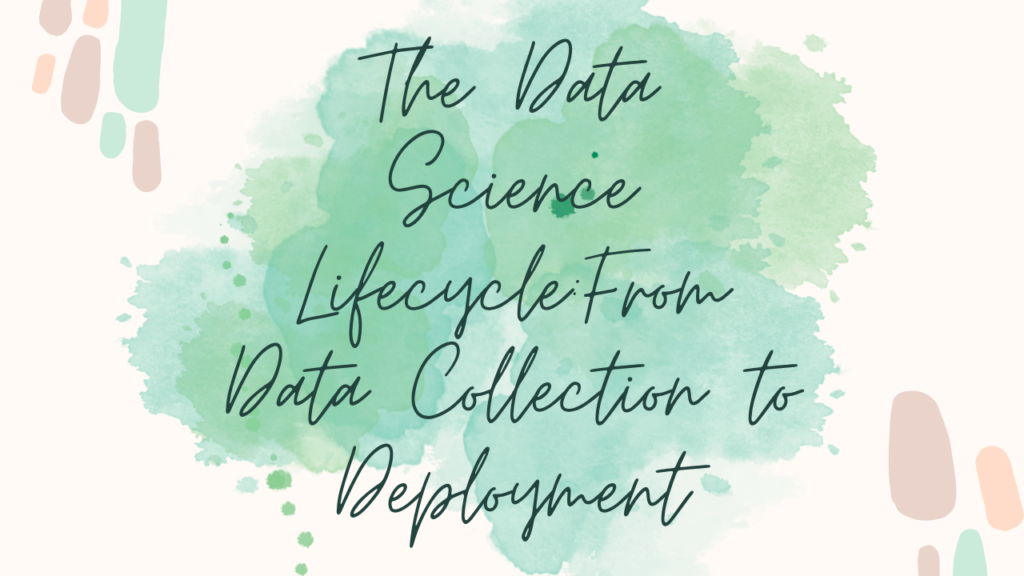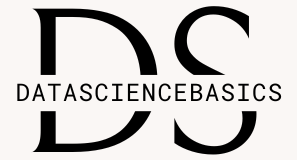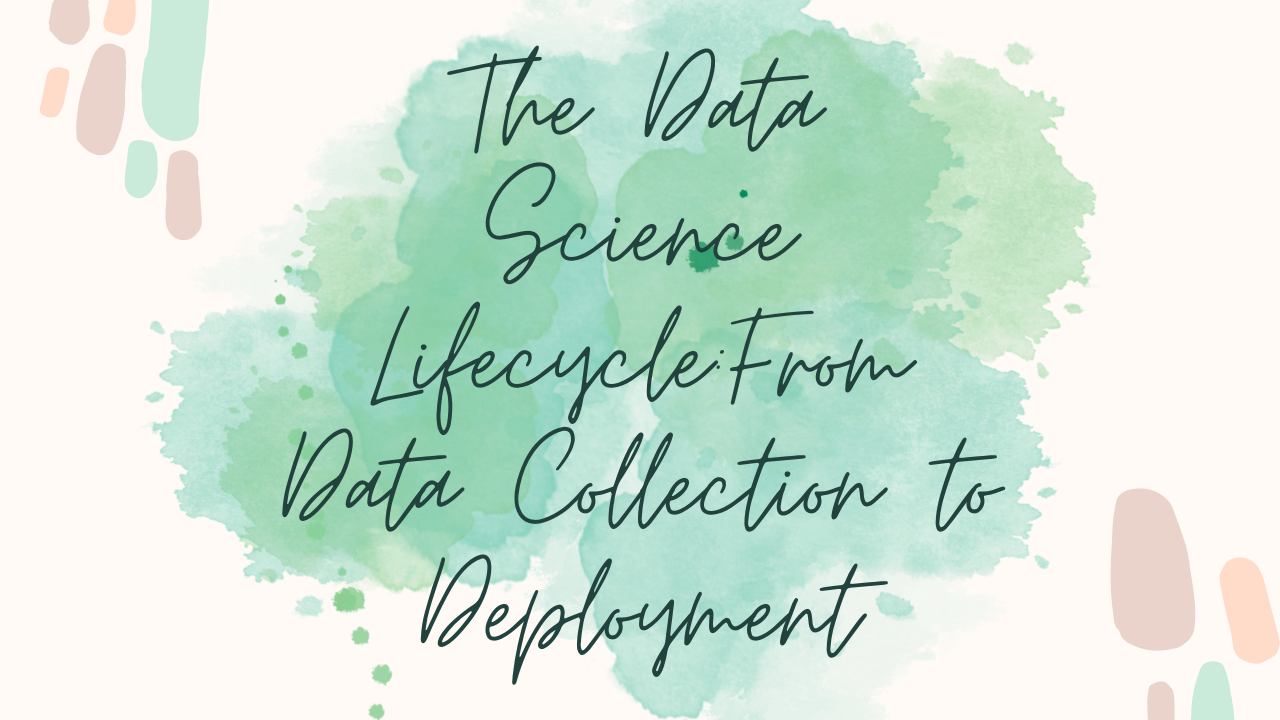
In today’s data-driven world, organizations are increasingly turning to data science to extract valuable insights from their data and drive informed decision-making. The data science lifecycle outlines a systematic approach to data analysis, encompassing various stages from data collection to model deployment. In this blog article, we’ll explore each phase of the data science lifecycle and provide examples to illustrate its importance and application in real-world scenarios.
1. Data Collection and Acquisition
The data science lifecycle begins with data collection and acquisition, where raw data is gathered from diverse sources such as databases, APIs, sensors, and external data providers. For instance, a retail company might collect sales data from POS systems, customer data from CRM systems, and market data from social media APIs and industry reports. The goal is to aggregate comprehensive datasets that will be used for analysis and modeling.
Example: A healthcare organization collects electronic health records (EHRs) from hospitals, clinics, and wearable devices to analyze patient health trends, identify risk factors, and improve treatment outcomes.
2. Data Preprocessing and Cleaning
After data collection, the next step is data preprocessing and cleaning. This involves handling missing values, removing duplicates, standardizing formats, and addressing outliers to ensure data quality and integrity. For instance, in financial datasets, preprocessing may involve handling null values, normalizing currency values, and detecting and removing fraudulent transactions.
Example: A telecommunications company cleans and preprocesses call detail records (CDRs) to eliminate errors, standardize formats, and ensure accurate billing and network performance analysis.
3. Exploratory Data Analysis (EDA)
Exploratory Data Analysis (EDA) is a critical phase where data scientists explore and visualize data to uncover patterns, trends, and insights. Techniques such as statistical summaries, data visualization, and correlation analysis are used to gain a deeper understanding of the data’s characteristics. For example, in a marketing dataset, EDA may reveal customer segmentation patterns, campaign performance metrics, and sales trends.
Example: An e-commerce platform conducts EDA on customer behavior data to identify purchase patterns, customer preferences, and opportunities for personalized marketing strategies.
4. Feature Engineering and Selection
Feature engineering involves creating new features or transforming existing ones to improve model performance. Feature selection techniques help identify the most relevant features for modeling. For instance, in a predictive maintenance project for manufacturing equipment, engineers may engineer features such as equipment age, usage patterns, and maintenance history to predict failures accurately.
Example: A transportation company engineers features such as route congestion, weather conditions, and driver behavior to optimize delivery schedules and reduce transportation costs.
5. Model Development and Evaluation
In the model development phase, data scientists build and train predictive models using machine learning algorithms. Models are evaluated using performance metrics such as accuracy, precision, recall, and F1-score. For instance, in a churn prediction model for a subscription-based service, data scientists develop a classification model to predict customer churn based on historical usage data.
Example: A financial institution develops a credit risk assessment model using historical loan data to predict the likelihood of default for new loan applications.
6. Model Deployment and Monitoring
Once a model is trained and validated, it is deployed into production environments to make real-time predictions or decisions. Model performance is monitored, and feedback loops are established to ensure model reliability and accuracy over time. For instance, in a fraud detection system, deployed models continuously analyze transactions, flag suspicious activities, and alert fraud detection teams for investigation.
Example: An energy company deploys a predictive maintenance model for wind turbines to monitor equipment health, detect anomalies, and schedule maintenance proactively to prevent downtime.
7. Continuous Improvement and Iteration
The final phase involves continuous improvement and iteration based on feedback and new data. Models are updated, retrained, and refined to maintain accuracy and relevance. For instance, in a recommendation system for an online streaming platform, models are continuously updated based on user feedback, content preferences, and viewing behavior to improve recommendations.
Example: A healthcare provider continuously updates a disease prediction model based on new patient data, medical research, and treatment outcomes to improve diagnosis and treatment planning.
Conclusion
The data science lifecycle provides a structured framework for organizations to leverage data effectively, from data collection to model deployment and continuous improvement. By understanding and implementing each phase of the lifecycle, organizations can extract actionable insights, drive innovation, and achieve business objectives in a data-driven world.

